Make the most of your yarn with our handy guide!
With the cost of living rising, many of us are looking for new ways to save. However, we don’t want you to sacrifice quality, just for the sake of a low price tag. Being economical isn’t just about being penny-conscious. It’s important to think about choosing the right fibres for your project and we’re here to help you make that choice, as well as show you how to make your knits last. Read on to become one of the savviest knitters around!
Costing it up
When you’re working out how much a project will cost you to make, there are a few important questions to ask:
How many balls do I need?
This will be listed in your pattern. If there are multiple sizes, make sure you find the number that corresponds to the size you are making. Don’t forget to include any different shades in your final total.
How much does the yarn cost?
Make a note of the price per ball, then multiply it by the number of balls you will need. This will give you the price of your project, excluding any needles, notions or embellishments.
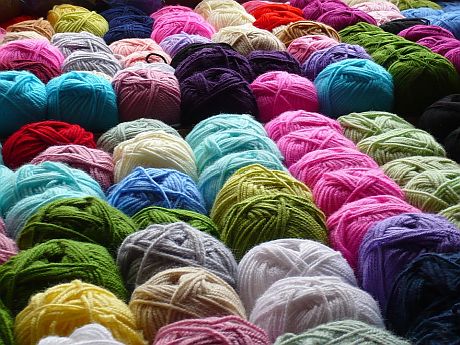
Substituting yarns
It’s fine to use a different yarn than stated in your project but there is a bit of maths to do first. Here’s what you need to consider:
How many grams are there?
In the UK, most yarns come in either 50g or 100g balls, although there are some exceptions. You’ll find this information on the yarn label.
How many metres are there?
Look at the length per ball. Not all 50g balls of DK yarn will be the same meterage, so you may need more or fewer balls depending on the length of your substitute. Multiply the meterage of the original yarn by the number of balls required, then divide this by the length of the new yarn. Round this figure up to work out how much yarn you’ll need.
For example…
If your original yarn had 100m per 50g and you needed eight balls, that’s 800m. But if your new yarn has 130m per 50g, you’ll only require seven balls. Working out the exact amount of yarn you need will help save you money.
Ask the Expert
Top designer and Stylecraft Blogstar Emma Varnam shares her words of wisdom on picking the best yarn for your project
“Choosing yarn is such an important and pleasurable part of both knitting and crochet. However, beginners are often tempted by great looking yarn which is not used in their chosen pattern then don’t understand why the finished article doesn’t turn out like the example photograph. Try to buy the yarn specified on your pattern. If you want to substitute it for a different yarn then find one that is the same weight (double knit, aran or chunky) and has the same tension.
Look on the yarn ball band for all your essential information such as the type and percentage of fibres in the yarn, which size knitting needle to use and which batch the wool was dyed in as this may affect the final shade. Always try to buy the same dyelot for each ball you buy. The colour can vary from one batch to another. I have made some disastrous jumpers where you could clearly see a different band of colour due to an odd dyelot. That is a really annoying and expensive mistake to make!
“When you first start to knit it seems prudent to chose inexpensive yarns to practise your craft. But once the bug has bitten, it is worth trading up your tastes and looking at some better quality yarns. Jumpers and accessories really do feel so much better and will keep their shape and lustre if you look for wool blend yarns. The touch and feel, the drape and stitch definition will make all the difference to your finished item. If you are making clothing for a friend or family member who is allergic to wool why not look for a super silky bamboo yarn? The gloss and colour of bamboo yarns make them a really attractive alternative.
“When you are choosing yarn, think about what your finished item will be used for. For instance, toys which are going to be played with lots and lots will survive much longer made in a good quality cotton yarn. The cotton will put up with washing in a machine and is a hard-wearing fibre. Items for precious babies can be made in the softest cashmere or merino wool yarn. Warm and soft to the touch, they are perfect for delicate skin. For a shawl or lap blanket, it is worth taking time to chose the very best yarn you can afford. However, blankets for beds can take up many balls and run into hundreds of pounds. My advice is to look to the new soft acrylic yarns. Get to your local yarn shop and test how squidgy and soft the yarn is before you settle on your preferred brand!
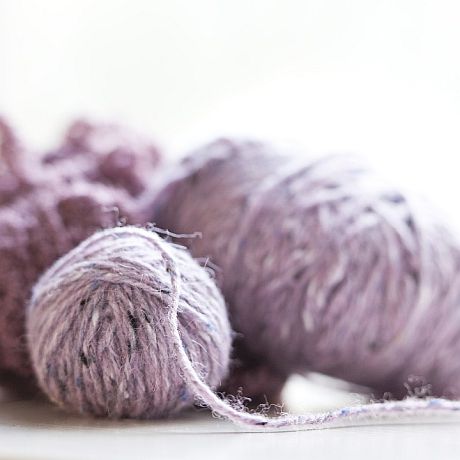
Visit your yarn shop
Don’t take the risk, head to your local yarn shop to see and feel the yarns for yourself. A yarn might look soft online but you won’t know until you touch it. When money is tight, you need to be sure that the yarn you buy is exactly what you want. We find rubbing the yarn under your chin or on your inner forearm the perfect test for tickly fibres!
How to remove bobbles from your knitwear
Also known as pilling, we’ve all encountered garments that have gone bobbly after washing or wearing. Did you know that the way a fibre is spun can affect its chances of pilling? With natural yarns, it’s to do with the length of the individual fibres. A longer fibre can be spun more tightly so is less likely to come undone. It’s the fibres that come away from the main yarn that turn into bobbles. You can help reduce pilling by following the washing instructions carefully and not agitating the fabric. Bobbles can easily be trimmed off using specialist combs or a simple razor blade. Giving your bobbly knitwear a haircut can give it a new lease of life!
Invest in stitch markers
More intricate patterns often require stitch markers and while you might think you’re saving money by using things like ring pulls or paper clips, these can catch your yarn and cause the fibres to split or break. Atomic Knitting’s handmade Halo stitch markers are snag-free as the bead is glued over the join in the metal ring. They cost £9.99 for a tin of 20 and fit needles up to 4.5mm. Find out more at atomicknitting.co.uk
3 EASY TRICKS TO PROTECT YOUR KNITTING!
1. Watch out for rough or broken finger nails as these can easily snag and split your yarn. Keep a nail file in your knitting bag for emergencies!
2. Hook and loop tape – more commonly known as Velcro – is a knitter’s worst enemy. Be aware of the fasteners on your jacket before pairing it with your lovingly handknitted jumper.
3. Most yarn shops will have a discount basket, so see what bargains you can find. Look out for special offers at online retailers too. We’ve got several discount codes throughout this issue!
How to choose the best yarn for your project
As Emma Varnam has said, you should really try to use the right yarn for the job. Every fibre has its place, it just depends what you want to achieve. Here, we look at the benefits of three of the most commonly used fibres in business.
Acrylic
Very affordable, often with a high meterage per ball
Available in so many shades and texture effects – including faux fur!
Usually machine washable and some can be tumble dried
Great for large knitted or crochet blankets or practising a new technique
Wool
So many varieties to choose from as each sheep breed produces different wool
Has a natural lustre and elasticity that helps your project hold its shape
Superwash yarns are now readily available
It’s great insulating properties means its perfect for winter warmers
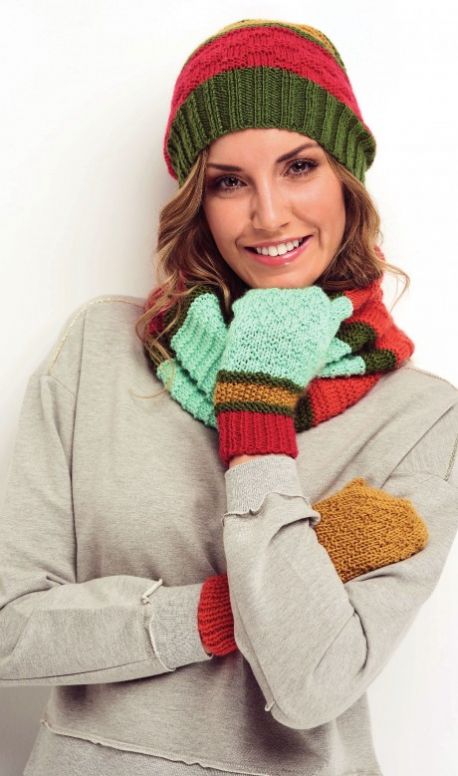
Cosy up in this superwash wool hat, mittens and cowl set. Download the pattern for free!
Cotton
Smooth and easy to use, it’s great for knitting and crochet
The knitted fabric has brilliant stitch definition
It’s a weightier fibre which gives the fabric a lovely drape
Available in different weights and is ideal for trans-seasonal knits
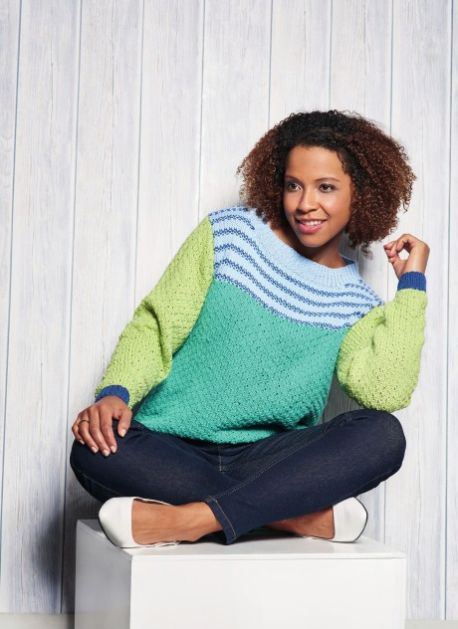
This comfy Colourblock Cotton jumper is free to download!
Share your money-saving knitting tricks on social media!

Emma Varnam is a successful knitting and crochet designer, blogger and author of numerous crochet books. See what she’s been up to lately on her website at www.emmavarnam.co.uk or follow her on Instagram at @EmmaVarnam.



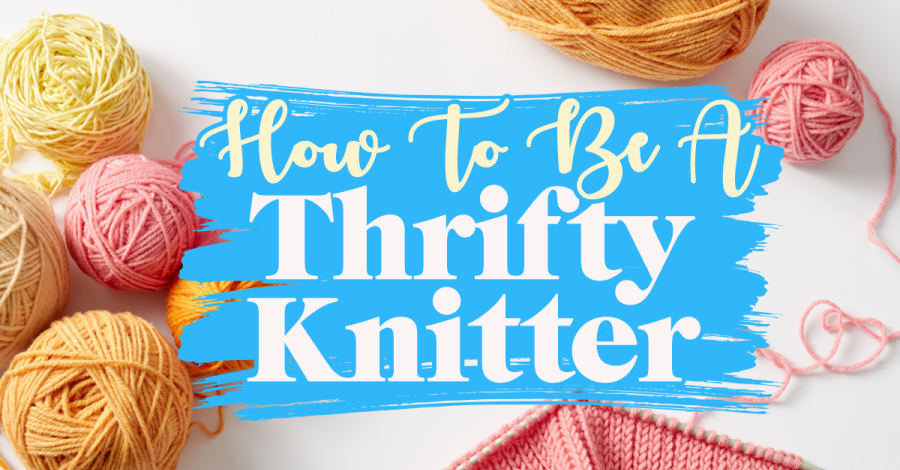
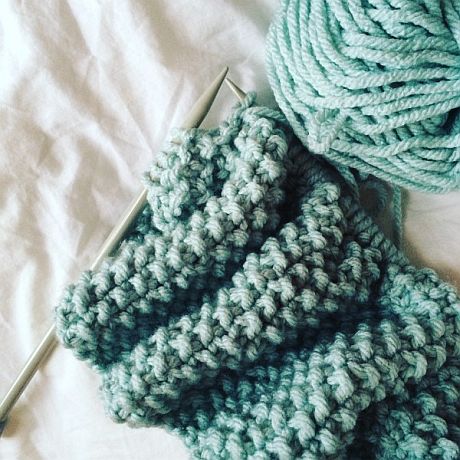
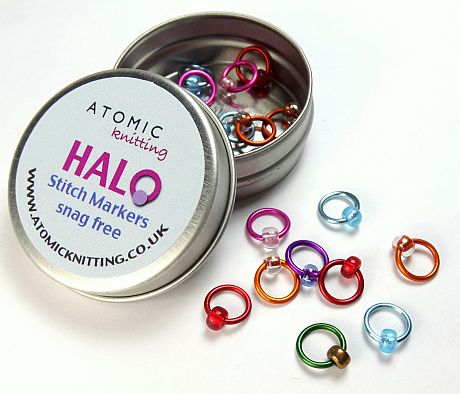
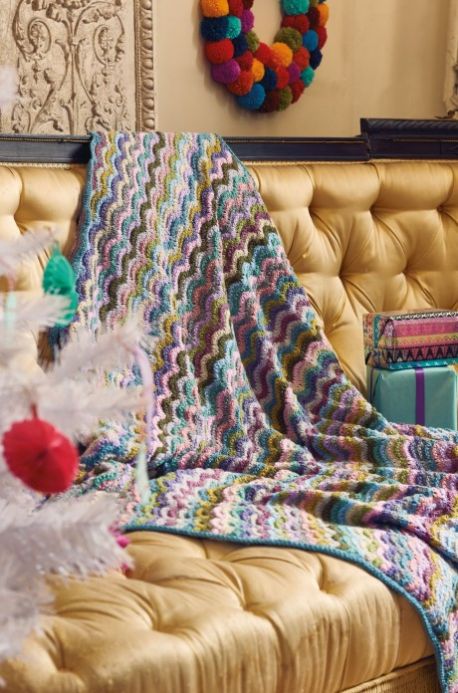
_333_180_c1.png)

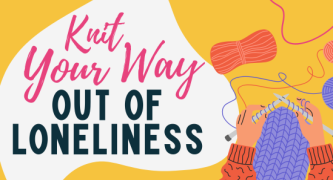
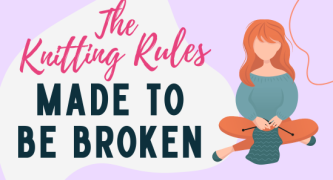
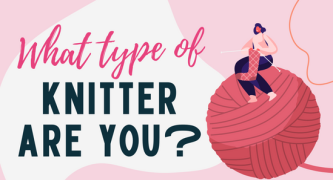

 Baby
Baby
 Toys
Toys
 Garments
Garments
 Crochet
Crochet
 Homewares
Homewares
 Dolls
Dolls









Share